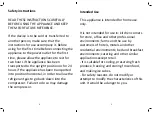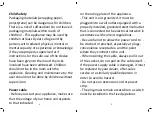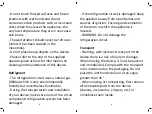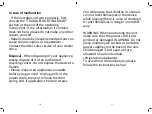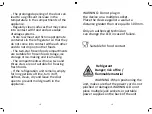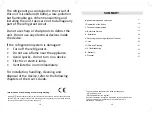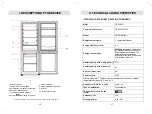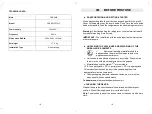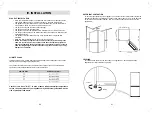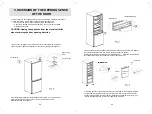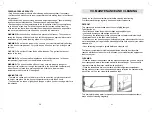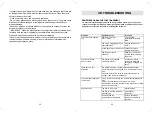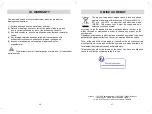
30
31
FREEZING FRESH PRODUCTS
• Only freeze premium products after cleaning and preparing them if necessary.
• Let the cooked dishes cool to room temperature before placing them in the freezer
compartment.
• All products to be frozen must be packed in polyethylene bags, "special freezing"
aluminum trays or plastic boxes. These packages must be airtight.
• Each package must be proportionate to the importance of family consumption so
as to be used at one time. Small packages allow for fast and uniform freezing.
• We remind you that a thawed product should be consumed as soon as possible
and never be refrozen unless it has been cooked in the meantime.
WARNING:
Bottles and cans should not be placed in the freezer. They can burst
during the freezing of the contents, and soft drinks can even explode! Never store
lemonades, juices, beers, foaming wines, etc. in the freezer.
WARNING:
Do not put ice cream or ice cubes in your mouth immediately after they
exit the freezer compartment. Very cold ice can freeze on your lips or tongue and
hurt you.
WARNING: Do not touch frozen foods with wet hands. The gel could stick your
hands to the food.
WARNING:
Do not use electrical appliances in the refrigerator and / or freezer
compartment (eg electric ice cream makers, mixers, etc.).
WARNING:
The freezer portion of the unit may not work properly (danger of
thawing of the contents or too high temperature in the frozen food compartment)
when the unit is placed for a prolonged period of time at a lower ambient
temperature than for which it is designed.
MAKING THE ICE
• To make ice cubes, pour cold water into the ice cube tray up to three quarters of
its height, and place it in the freezer compartment for more than 2 hours.
• To extract the ice cubes, slightly bend the pan or place it under running water for a
few seconds.
VII. MAINTENANCE AND CLEANING
Unplug the unit from the electrical outlet before cleaning or defrosting.
We recommend that you regularly clean and disinfect your device.
DEFROST
This operation is recommended when the unit is lightly charged.
To defrost the air;
• Pack fresh and frozen foods in freezer bags and keep them cool.
• Leave both doors open and sponge as you melt.
• To speed up the defrosting process, you can place hot water containers in both
compartments and, in this case, close the doors.
• To defrost, you can use a squeegee (not supplied) or any plastic utensil but never
metal instruments, de-icing products, electric appliances such as hair dryers, steam
cleaners, etc.
• Once defrosting is complete, splash water and clean the unit.
The freezer compartment must always be defrosted when the frost layer has
reached a thickness of about 4 mm. In all cases, you must defrost the appliance at
least once a year.
CLEANING
• Clean the inside of the appliance and the accessories (shelves, shelves, etc.) with
a soft sponge and warm water mixed with white alcohol vinegar. Then rinse with
clear water and dry the pieces carefully with a soft cloth.
• Clean the condensate drain on the rear wall of the refrigerator compartment.
Always make sure that it is not obstructed as water is collected in a container at the
back of the unit. You can clean it with a wadded stick.
This device for draining water is very easily soiled and causes unpleasant odors;
make a habit of cleaning it regularly.
Summary of Contents for OCEAFC167WP
Page 20: ...OCEAFC167WP IM_052019_V1...

